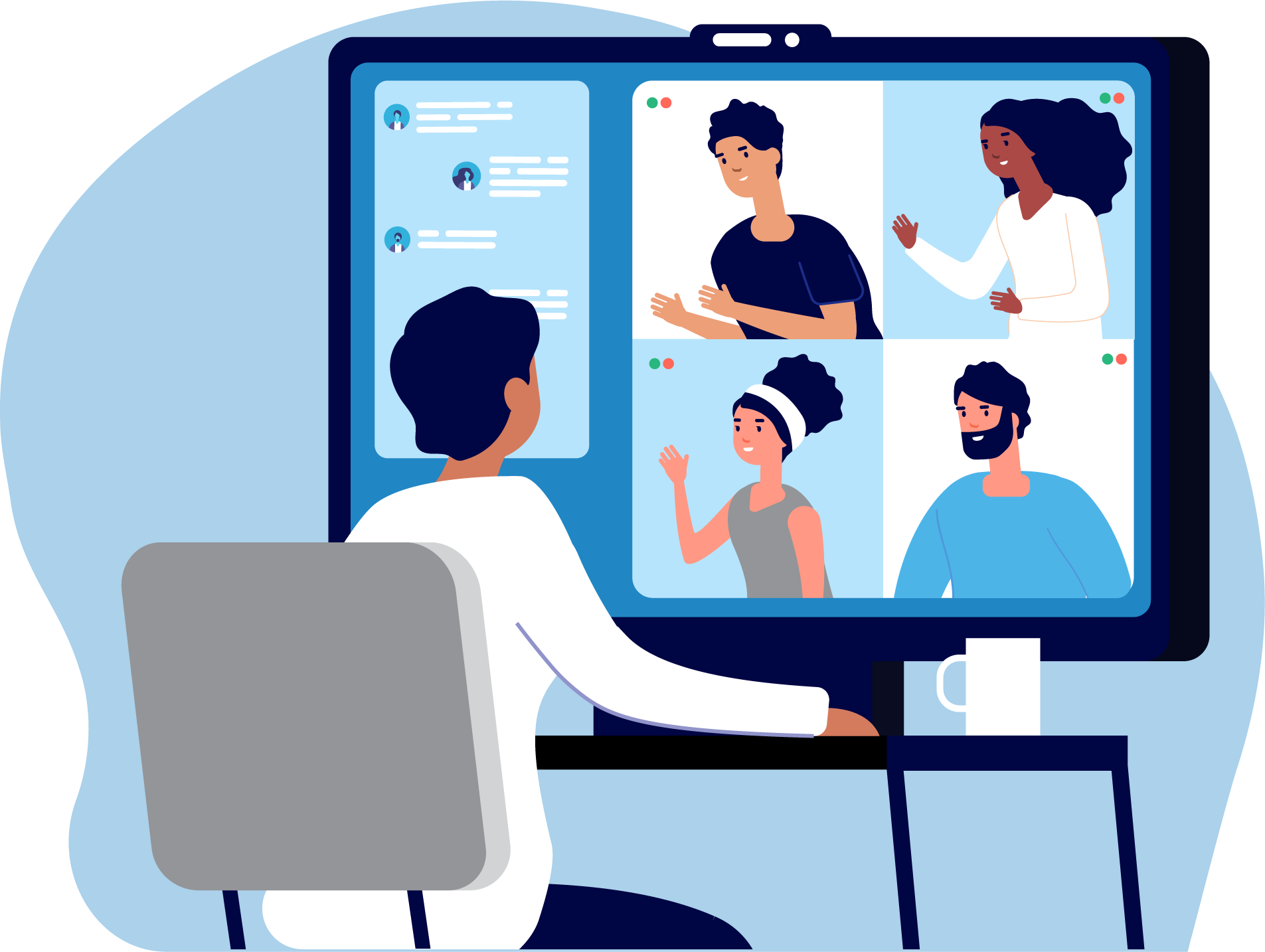Transitional care management (TCM) is crucial to improving outcomes for patients with complex healthcare needs. Patients with comorbid conditions often struggle with managing their health during episodes of acute illness, leading to high readmission rates and poor patient outcomes.
TCM addresses these challenges by administering support throughout the entire care continuum as patients move from one healthcare setting to another. Whether transitioning from a hospital to a long-term care facility or returning home after a prolonged hospital stay, TCM ensures patients receive the care they need when they need it – in a setting that best suits their unique needs.
Industry experts note that inefficient, uncoordinated TCM programs contribute to clinical and financial strain on healthcare organizations so it's important to manage an effective program.
This blog will cover everything you need to know to deploy an effective transitional care management program, including:
- Care Coordination and the 30-day Transition Period
- How to Provide Transitional Care Management
- How Telehealth Supports the Transition
- Ongoing Care Management for Chronic Conditions
- Start Your Transitional Care Management Program with HRS Telehealth
Care Coordination and the 30-day Transition Period
The 30-day transition period begins when a patient is discharged from the hospital. During this time, the patient's care is coordinated by a transitional care manager who must provide interactive communication, both virtually and in-person.
By the end of the 30-day transition period, the patient should receive the care they need to adjust to their new care setting. There are three key components that determine the success of this transition.
- Patient education and support: Patients and their family members, caregivers, or guardians should be educated on the care plan, the patient’s diagnosis, risk-specific interventions, and self-management tips.
- Monitoring and evaluation: Diagnostic tests and follow-up on results from previous appointments should regularly be reviewed and monitored to assess if there is a further need for treatment.
- Coordination of care: Care coordination is the most crucial component in your TCM program. It involves communicating the patient’s needs and preferences amongst interdisciplinary teams to ensure high-quality and high-value healthcare delivery.
Clear and effective communication is key in coordinating care among your inter-professional care team (IPCT) members. A lack of communication between care providers can lead to potential delays in care delivery, avoidable hospitalization, and overall poor patient satisfaction. That’s why it’s so important to close communication gaps by ensuring interdisciplinary teams have full access to the patient’s care plan.
With regular communication between everyone involved in care delivery, comprehensive patient care coordination can be facilitated to ensure your patients are receiving the right care at the right time, as well as receiving the resources to properly manage their conditions.
How to Provide Transitional Care Management
There are various ways to provide transitional care management. Care functions can either be carried out by one transitional care manager per patient or a team of transitional care managers who coordinate care for multiple patients. In a care management team, healthcare professionals with different roles are required to collaborate and plan for effective and timely transition of members to the community through transition activities.
While there is no one-size-fits-all method for running your TCM program, healthcare providers should take the patient’s unique needs and available healthcare resources into consideration.
Common Challenges of TCM
TCM is a proven approach to improving health outcomes and patient satisfaction. However, there are several challenges that healthcare providers should consider in implementing a TCM program.
- Financial costs: Some healthcare organizations may face financial barriers from the additional costs of hiring medical staff to facilitate transition of care, implementing new telehealth solutions, and providing training to TCM managers and team members.
- Lack of resource allocation: Staffing shortages, limited community resources from home health agencies and inadequate infrastructure are all factors that need to be considered when allocating resources for TCM.
- Miscommunication in care coordination: Coordinating between multiple healthcare providers and settings can be difficult. A lack of standardized processes can lead to conflicting recommendations, unclear patient care plans, and inefficient clinical workflows.
Key Benefits of TCM
TCM offers a valuable service to chronic, elderly, and underserved communities by improving health outcomes with high-quality, high-touch care when implemented effectively.
- Reducing the risk of hospital readmissions for chronic patients: As many as 86% of patients experienced reduced readmissions compared to those who did not engage in TCM services, according to a 2018 study.
- Increasing access to care for patients in rural areas: By leveraging telehealth, TCM can extend care coordination to chronic patients in rural communities. Telehealth tools enable healthcare providers to consult with patients through virtual visits to increase access in areas where healthcare services are geographically limited.
- Improving patient satisfaction: With TCM, payors and patients benefit from improved health outcomes and reduced readmission rates. Delivering high-quality healthcare is a competitive advantage that helps with patient retention and referrals.
- Increasing patient safety: TCM ensures patient safety through collaborative care coordination. With multiple healthcare providers working together to facilitate care transition, the risk of medical errors decreases and provider accountability for patients increases.
- Reducing the cost of care: As TCM is known to effectively reduce readmissions, providers can utilize the program to avoid value-based penalties that come from hospital readmissions within the 30-day period after discharge.
Billing & CPT Codes for TCM
According to CMS, providers must conduct one face-to-face visit within the timeframe of these two CPT codes used to bill for TCM.
- CPT code 99495 – TCM with moderate medical complexity requiring a face-to-face visit within 14 days of discharge.
- CPT code 99496 – TCM with high medical complexity requiring a face-to-face visit within 7 days of discharge.
How Telehealth Supports the Transition
Care transitions are challenging to facilitate in our current healthcare climate due to the rise of chronic conditions and insufficient access to skilled healthcare providers. Telehealth is an invaluable tool in navigating these challenges and ensuring the effective delivery of TCM through improving healthcare access in a convenient and cost-effective way.
Telehealth enables patients who live in rural communities to transition back to their homes easily. Patients have access to healthcare providers at their fingertips without the need to travel long distances. With virtual visits, clinicians can establish strong provider-patient connections while reducing the patient’s burden of traveling. Transitioning patients also receive essential education and support to help them adjust to their new environment with easily accessible online resources.
For patients with chronic conditions, telehealth tools are proven to help patients with chronic care management. In one example, a study examining telehealth's effects on outcomes for patients with type 1 diabetes recorded an 88% adherence rate for scheduled telehealth appointments, with 100% of patients surveyed expressing their satisfaction with the service.

Remote Patient Monitoring for Diabetes
See how HRS’ ready-made, turnkey remote diabetes monitoring solutions can help your diabetes patient population prevent readmissions, decrease HGbA1c levels, and provide virtual care.
Ongoing Care Management for Chronic Conditions
After the 30-day transitional period, ongoing care management continues for patients with chronic conditions. In these care management programs, patients are provided services with the goals of improving self-management and reducing healthcare costs. Key components of care management programs include:
- Patient education
- Medication management and adherence support
- Risk stratification
- Population management
- Care planning
One of the most effective ways to manage ongoing care is through virtual care solutions like telehealth. Health Recovery Solutions (HRS) offers a range of telehealth tools that engage patients with care management via tablet offerings, mobile applications, and biometric Bluetooth devices. By actively monitoring patients’ health in a virtual setting, providers can empower them to actively manage their health outside the hospital environment.
Start Your Transitional Care Management Program with HRS Telehealth
When there is an interruption in care while patients transition from inpatient care to in-home care, they are at risk of readmission. That’s why TCM plays a pivotal part in ensuring the continuity of care during this transition. Implementing a TCM program requires collaborative care coordination, patient education and support and consistent monitoring and evaluation to meet every patient's unique needs. By integrating telehealth tools into your TCM program, workflows are optimized, accessibility is improved, and costs are reduced by replacing in-person appointments with virtual visits.
HRS provides healthcare providers with a nimble suite of care management telehealth tools that adapt to the unique needs of both patients and providers, supporting the 30-day transition period and beyond. A flexible, customizable telehealth program plays a key role in ensuring every patient receives the healthcare they need across the care continuum. Contact us today to discover how HRS can support your transitional care management program.

Connect with an HRS Digital Health Advocate
Schedule an introductory call with our team of telehealth and RPM specialists for an overview of our award-winning solution.